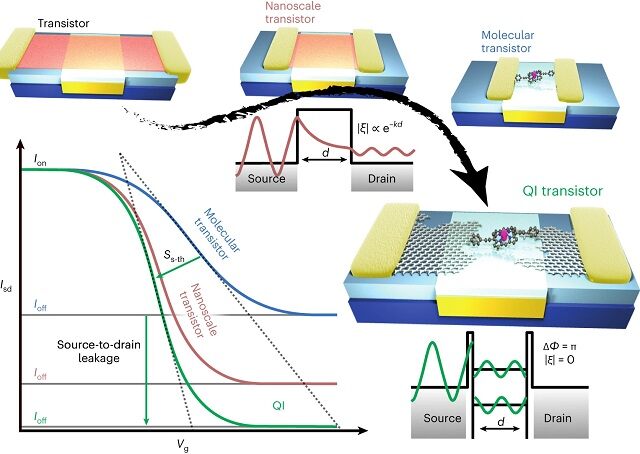Researchers claim quantum interference could revolutionize transistors, but skepticism remains

Quantum interference, which occurs when two waves interact with each other, is being studied by researchers from Queen Mary University of London. They believe that this phenomenon can help create smaller, faster, and more energy-efficient transistors. However, while some experts are excited about this possibility, others are skeptical about its practicality and real-world applicability.
Transistors are the basic building blocks of modern electronics, but their traditional manufacturing methods are reaching their limits. As transistors become smaller, they become more prone to inefficiencies and errors. One major concern is quantum tunneling, where electrons leak through devices even when switched off. The research team aims to address this issue by exploring new types of switching mechanisms that utilize quantum interference.
The research team's novel approach involves building a transistor with a conductive channel made from a single molecule called zinc porphyrin, sandwiched between two graphene electrodes. By applying a voltage to the electrodes, the flow of electrons through the molecule can be controlled using quantum interference. When the electrons interfere constructively, the transistor is switched on, and when they interfere destructively, it is switched off.
The researchers claim that their transistor exhibits a high on/off ratio, offering precise control over its operation. Furthermore, they report that the transistor is stable and can sustain hundreds of thousands of switching cycles without breaking down. These findings present a promising outlook for potential applications in various electronic devices.
Lead author Dr. James Thomas highlights the potential of quantum interference in electronics applications, calling it a "significant step" towards realizing its potential. Co-author Professor Jan Mol adds that this technology could lead to the development of smaller, faster, and more energy-efficient transistors.
However, some experts approach these claims with skepticism. While the research is commendable, many raise concerns about the practical implementation and scalability of this quantum interference-based approach. Critics argue that the current state of the technology is still at an early stage, and many challenges need to be overcome before it becomes commercially viable.
One significant concern is the reliability and durability of these transistors. While the researchers report impressive stability over a large number of switching cycles, it remains to be seen how these devices would perform under real-world conditions and potential variations in temperature and other environmental factors.
Another point of contention lies in the scalability of the technology. Manufacturing transistors on a large scale requires reproducibility and uniformity, which might be challenging to achieve with single-molecule transistors. Skeptics argue that the complexity and precision required for mass production may limit the practicality of this approach.
Privacy and security also raise concerns. With the increasing reliance on advanced technologies, ensuring the protection of sensitive data becomes paramount. Quantum-based technologies could potentially introduce new vulnerabilities and risks that need to be thoroughly addressed before widespread adoption.
While the claims made by the research team are intriguing, it is important to approach them with a skeptical eye. The road to practical implementation is a long and complex one, requiring further research and development. As diverse perspectives weigh in on the viability of quantum interference-driven transistors, the coming years will undoubtedly shed more light on the future of this technology.
Overall, the research conducted by the team provides a thought-provoking exploration of quantum interference in transistor design. However, skeptics caution that it is still too early to determine if this approach will truly revolutionize the electronics industry or if it remains a theoretical possibility with limited practicality. Further research and testing will be necessary to validate these claims and assess their feasibility in real-world scenarios.

 How to resolve AdBlock issue?
How to resolve AdBlock issue?